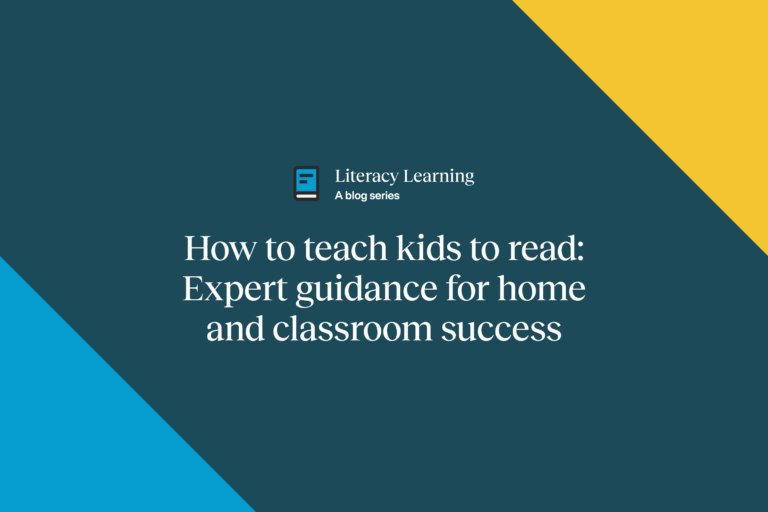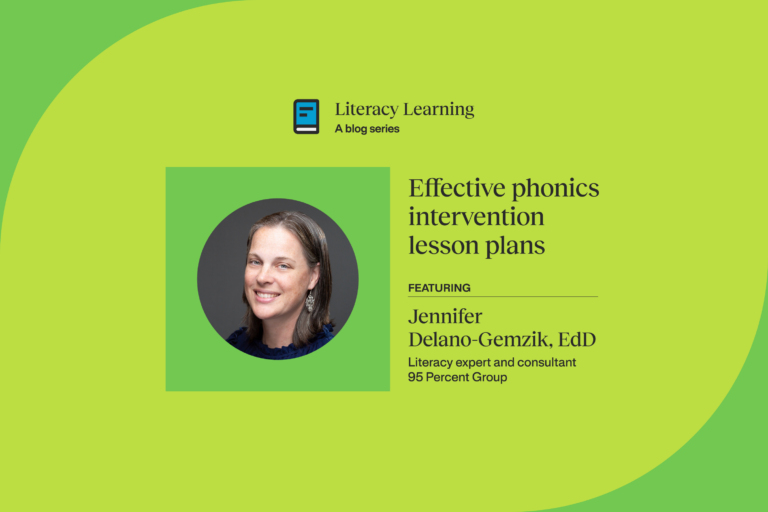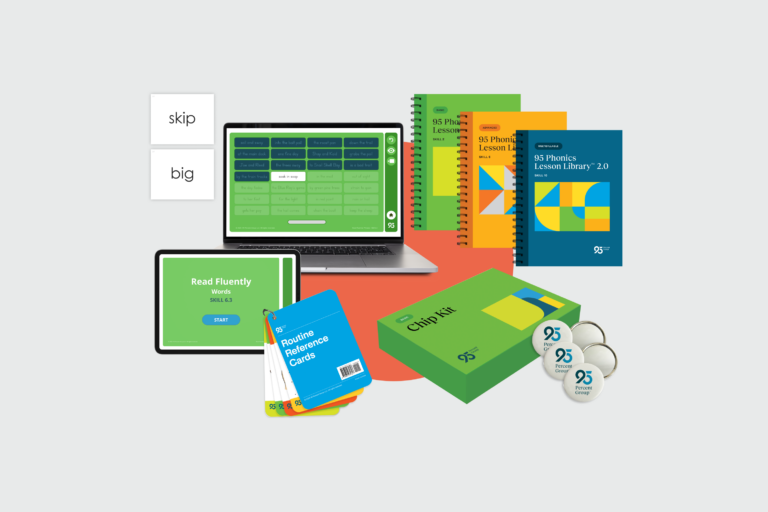9 Reading comprehension games and activities
How to improve reading comprehension in an engaging and entertaining way

Ensuring Comprehension
Explicit or formal instruction in the application of comprehension strategies has been shown to be highly effective in enhancing understanding.
National Reading Panel, 2002
A 2000 National Reading Panel Report summarized several decades of reading research and concluded that effective reading instruction addresses these five foundational areas—phonemic awareness, phonics, fluency, vocabulary, and comprehension.
Reading comprehension is the sense-making skill—comprehension instruction ensures students can make sense of what they read, draw correct inferences, and connect what they’ve read to what they already know. As comprehension skills deepen, students go beyond just a surface understanding of what they read. The end goal of comprehension instruction is to nurture independent, proficient, and critical readers (and thinkers).
Comprehension instruction should equip students with a range of strategies to help them understand what they are reading across different types of text and subject areas, and help them appreciate that comprehension requires more effort than ability.
Engage students with activities and games to strengthen reading comprehension skills
As students shift from learning to read to reading to learn, incorporating interactive games and activities can provide opportunities to practice and strengthen reading comprehension skills and contextualizes what you’re teaching in an interactive, fun way. Here are five additional ways reading comprehension games and activities can help students become better readers:
- Gain critical reading confidence skills
- Practice responding to the text
- Repurpose a game they have seen or played
- Receive instant feedback to learn from mistakes
- Offer a multisensory learning opportunity
We’ve ordered the games and activities by grade level to help you select a good fit for your students’ needs. We recommend you download our 95 Comprehension Process Continuum to see a seven-tiered sequence for teaching comprehension strategies.
Kindergarten and First Grade
1. Sentence Meaning—Sentence Pantomime
This activity will help students identify the meaning of a sentence.
Make several short short sentence strips (Read a book; Sing a song.) and distribute. Have students work in pairs. Student one silently chooses a sentence and pantomimes it. Student two watches, guesses by selecting one of the sentence strips, and reads it aloud. If the guess is correct, the student keeps the strip. If incorrect, the student guesses again.
2. Sentence Meaning—Name That Rhyme
This activity uses common nursery rhymes to identify sentence meaning by matching title cards to sentence strips.
Create nursery rhyme title cards and nursery rhyme event sentence strips (e.g., title: Twinkle, Twinkle Little Star; sentence strip: How I wonder what you are). Place titles face up. Students will take turns selecting from sentence strips placed face down, reading it aloud, and matching to the right title.
Second and Third Grade
3. Monitoring for Understanding—Ask and Answer
Students work in pairs to generate and answer questions on a text they are reading and then exchange roles of asker and answerer. Students select from a set of question cards (who, what, where, when, why, how, etc.) to catalyze creating questions about the text they are considering.
4. Narrative Text Structure—Story Grammar Yammer
For this activity, provide a story organizer for students to use to help them identify the story’s elements. Include blocks in the organizer for characters, setting, problem, events, and solution.
Students read the text and use the organizer to help them identify and record the characters, setting, problem, events, and solution in the provided blocks. Students can work individually or in pairs.
Fourth and Fifth Grade
5. Narrative Text Structure—Story Mapping
In this activity, students use a graphic organizer to record information related to story elements. This is a variation of #4 but with more details for older students—the organizer can be similar—just add multiple blocks for characters, setting, problem, events. In addition, provide a map template with title and author in a block at the center, with links out in a circle around the center title block presenting a range of relevant questions (e.g., Who is your favorite character and why? What is the plot of this story?)
6. Text Analysis—Fiction and Nonfiction
Students sort books into fiction and nonfiction.
Provide a range of books and texts and an organizer with horizontal columns for Title, Genre, and Reason. Genres might include biography, poetry, fantasy, folktale, mythology, mystery, historical fiction, etc. Have students discuss several books with a partner and fill out their organizer.
7. Monitoring for Understanding—Question Cards
Students answer questions to comprehend text.
Provide narrative or expository text at students’ reading level range. Create a series of question cards (e.g., Do you understand what you just read? Why or why not?; Paraphrase what you just read; What do you think is going to happen next?; What is the main idea?; How does what you just read relate to your own life?)
All ages
8. Puppet show story retelling
Work with younger students to identify the storyline and characters in a story and make simple puppets and settings.
Older students can work independently or in pairs. Use simple materials for making the puppets and settings: paper, cardboard, fabric, and popsicle sticks.
9. Interview your character
Older students can work in pairs to interview characters, taking turns as interviewer and character.
You can adapt this to help younger students with comprehension by interviewing them about the characters in a story. Example questions for characters might include: Can you introduce yourself to me? Where did you grow up? Who would star in a movie about you?
In conclusion
It’s important to keep in mind the goal of helping our students to comprehend what they read. Literacy expert Lousia Moats sums it up well:
“As with any complex skill, learning to read requires both systematic instruction and many hours of practice at a level at which the student can be successful. Those who learn early and well, whose word reading skills are accurate and automatic, and who can comprehend what they read, are more likely to read widely, to gain knowledge and vocabulary from reading, and to enjoy reading for pleasure.”
—Louisa Moats, How Children Learn to Read: Toward Evidence-aligned Lesson Planning (World Bank Group, 2022)
References
For more activities and example organizer templates, visit the Florida Center for Reading Research: For Educators, Student Center Activities.
95 Percent Group products to support comprehension

The research is very clear on what good readers do to make meaning out of text. The goal is to build on the work of experts and teach students to apply and monitor their own use of the comprehension process.
RACHEL SCHECHTER, PHD
Start here
Download the Comprehension Process Continuum to see a seven-tiered sequence for teaching comprehension strategies.
Download the LXD Research Comprehension 3-6 Efficacy Report by Rachel Schechter, PhD.
95 Comprehension, Grades 3-6—Set students up for reading success in grades 3-6 with the direct, explicit, and systematic instruction they need on comprehension processes, within targeted intervention groups.
Morphemes—Morphological awareness is the ability to recognize, understand, and use the units of meaning that make up words, helping build student reading comprehension skills. Here are two resources aimed to help students in K-3 and 4-12:
Morpheme Magic: Lessons to Build Morphological Awareness Grades 4-12
Morphemes for Little Ones: Bringing the Magic of Language into K-3 Classrooms
Interested in learning more?
Contact a literacy expert.



